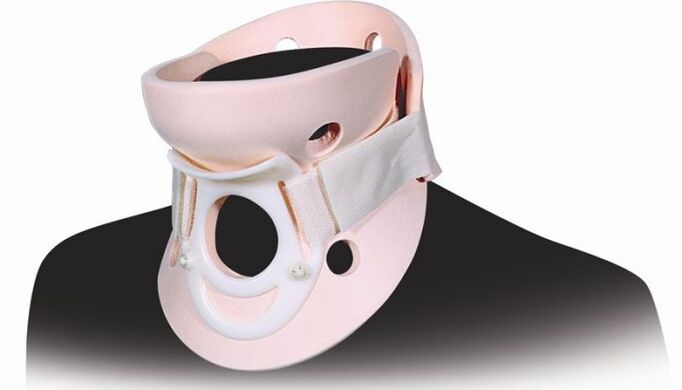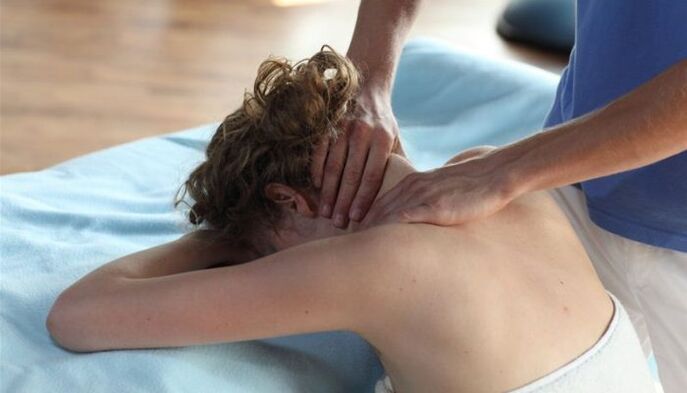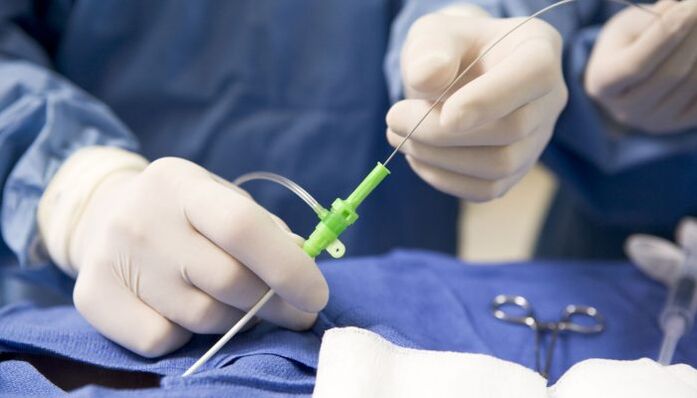How to treat cervical osteochondrosis? Many patients and doctors around the world ask themselves this question. Degenerative diseases of the musculoskeletal system are very difficult to treat and lead to a wide variety of complications. In these conditions, the question of effective therapy is extremely relevant.
Osteochondrosis of the cervical vertebrae

Before finding out whether cervical osteochondrosis can be cured, it is worth understanding the very essence of this disease. Osteochondrosis is a degenerative process that begins in the intervertebral discs - the cartilaginous layers between every two adjacent vertebrae.
Imagine an intervertebral disc. It consists of an inner soft part - nucleus pulposus and an outer shell - fibrous capsule. It is this that gives the soft part a certain shape so that the core fulfills its cushioning function.
In osteochondrosis, the primary degenerative process occurs precisely in the fibrous capsule:
- A defect is formed under the influence of damaging factors.
- The soft core of the disc penetrates through it - a protrusion of the spinal discs is formed.
- As the process progresses, part of the nucleus falls out - a disc herniation is formed.
All these processes involve the inflammation of the surrounding tissues. First, a reflex pain syndrome develops, and then a compression syndrome - the nerve roots are compressed by a hernia.
This process can occur in any part of the spine. One of the most common places is the neck. Is it possible to cure osteochondrosis of the cervical vertebrae?
Treatment options
Understanding the essence of the disease and the mechanism of its development, we can guess which methods can completely and permanently cure the patient from this disease.
There are several different effects that we can expect from each method of therapy: symptomatic (eliminates the manifestations of the disease), pathogenetic (interrupts the pathological mechanism of development), etiological (directly affects the cause of development).
In osteochondrosis, the cause is a wide variety of risk factors for the disease. It is impossible to influence them if the disease already exists. However, preventive measures are specifically aimed at eliminating the causes.
Many methods of treatment have a possible pathogenetic effect, and we will try to find this in each of the methods proposed by modern medicine.
The symptomatic effect is also very important. The full course of treatment prescribed by the attending physician should always include an impact on the manifestations of the disease, since during therapy it is necessary to alleviate the patient's health condition.
Among the variety of treatment methods, we will try to understand the following treatment options:
- Drug exposure.
- Orthopedic products.
- Physiotherapy.
- Physiotherapy, massage, manual therapy.
- Spine operations.
- Radiofrequency ablation.
A few words should be said about prevention, which allows you to completely avoid the appearance of the disease.
Drug therapy

Not all drugs prescribed by a doctor for osteochondrosis help to get rid of it. Many drugs perform a purely symptomatic function:
- Nonsteroidal anti-inflammatory drugs - remove inflammation.
- Muscle relaxants – prevent reflex muscle spasms.
- Topical analgesics - relieve pain.
- Vascular means - used for cervical osteochondrosis in combination with vertebral artery syndrome.
- Glucocorticosteroids - these hormonal drugs have a pronounced anti-inflammatory effect.
However, several drugs have a pathogenetic effect. First of all, chondroprotectors should be mentioned. These drugs are used only in the first stages of osteochondrosis, when there is still no disc herniation. They slow down the degeneration process and prevent the formation of protrusions. It should be taken for a long time and constantly, but the therapeutic effect will be quite significant.
Vitamins of group B - these drugs do not affect the degeneration process itself and do not help to treat osteochondrosis. However, it is very important to use them in the presence of reflex or compression syndromes. Vitamins support metabolism in nerve tissue and prevent nerve death.
Thus, among all drugs, only timely prescribed chondroprotectors help to get rid of cervical osteochondrosis.
Orthopedic products

The next method of treatment, which is very popular in modern medicine, is the use of orthopedic devices. The use of corsets, bandages and orthoses is widespread.
For cervical osteochondrosis, collars are most often used, but there are also other types of orthopedic devices. These products effectively eliminate pain, that's for sure. But are they able to influence the course of the disease?
The following characteristics of this type of therapy are important for the treatment of osteochondrosis:
- Corsets and collars have a compression effect - they put pressure on a certain part of the spine. This prevents the appearance of protrusions and hernias, that is, the formation of complications.
- Orthopedic devices always separate the vertebrae from each other in a vertical plane. This helps relieve pressure from the nerve roots and the intervertebral discs themselves.
- If there is a bulge or degenerative changes, the corset will not help to get rid of them. However, when used regularly, the drug helps not to remember the manifestations of the disease.
The listed properties should be taken into account not only by the doctor, but also by the patient, so as not to expect too much from the use of dressings.
Physiotherapy

Therapeutic gymnastics is one of the most underestimated methods of treating orthopedic diseases by patients. Regular exercise and activity help to get rid of most manifestations of any disease.
Osteochondrosis is no exception. With pathology of the cervical spine, physical activity has the following healing properties:
- Exercises help eliminate pain, reflex muscle spasms, and compressive effects on the vertebral artery and other vessels. This means that with regular exercise you can reduce the need for symptomatic therapy.
- The exercises help to form the muscular corset of the cervical vertebrae. Trained muscles hold internal structures, including bones and cartilage, and prevent protrusions from forming.
- Degenerative changes in the disc develop under the influence of excessive, improperly applied load or its deficiency. Correct exercises prevent the degenerative process and activate blood circulation in the area of the intervertebral discs.
Even knowing about such beneficial effects of exercise, many patients are too lazy to do it. Start training with a specialist and then implement it into your daily life. Soon you will not be able to imagine your day without exercise and a set of useful exercises.
Physiotherapy and massage

Quite controversial methods of treatment are physiotherapy and massage. These methods certainly help alleviate some of the symptoms of the disease. Neck massage helps to eliminate muscle spasms, and physical therapy relieves inflammation, pain and prevents compression syndrome.
But can these methods treat cervical osteochondrosis? The pathogenetic effect is achieved only as part of complex treatment. Physical therapy and massage should be used in conjunction with physical therapy and medication. The effects of different treatment methods potentiate each other:
- Electro- and phonophoresis help drugs reach the spine.
- Manual therapy relaxes muscles after prolonged exertion.
- Acupuncture and electromyostimulation in combination with exercise therapy create a strong muscle corset and eliminate pain.
Examples of the combined effect of different treatment methods can be given further.
We must also not forget that all methods of physiotherapy and massage increase local blood flow and therefore metabolism in damaged tissues. As a result, degenerative processes are slowed down or stopped completely.
Surgical treatment

In some cases, the pathology of the intervertebral discs can be eliminated only by surgery. This method also cannot be considered an etiological treatment - the surgeon does not act on the cause of the disease, but removes its consequences. However, in the presence of local osteochondrosis, surgery can help permanently eliminate its symptoms.
There are various methods of surgical intervention, but most of them boil down to two possibilities:
- Discoplasty with palliative measures. During the operation, all complications of the disease are also eliminated.
- Prosthetic intervertebral cartilage or replacement of the entire motor segment of the vertebrae with a prosthesis.
Regardless of the choice of treatment method, relapses of cervical osteochondrosis are possible. The disease can affect any other adjacent intervertebral disc. To prevent this from happening, preventive measures are taken.
You should also remember the need for postoperative rehabilitation. Many of the above methods of therapy help restore efficiency. It is convenient to combine them during sanatorium treatment.
Radiofrequency ablation

A very effective and promising treatment method is radiofrequency ablation. Not so long ago, this method was not known at all, but now ablation is carried out in many large cities.
The essence of the procedure is as follows:
- Through a needle puncture, a special electrode is applied to the damaged intervertebral disc.
- The disc is heat treated with electricity.
- In the area of impact there is destruction of the nerves and the disc tissue itself.
- After ablation, the disc remains between the vertebrae. It is not able to perform a shock-absorbing function, but it does not cause pathological symptoms.
The advantages of the method are the absence of the need for general anesthesia, the short duration of the procedure and the quick recovery. The technique can be used as a first stage of treatment if the symptoms are not completely relieved.
In most cases, ablation helps to eliminate all symptoms of osteochondrosis, but the patient is not immune from damage to other intervertebral discs from this disease.
Prevention

From the above, we can conclude that all modern treatment methods help only to prevent the progression of cervical osteochondrosis or to eliminate its manifestations only on a specific disc. There is a high probability of recurrence of the disease and its spread to adjacent cartilaginous layers.
This process cannot be eliminated, but it can be prevented. For this purpose, numerous methods are used to prevent osteochondrosis.
If the disease has just started to bother you, it has appeared in many relatives or you have been treated for osteochondrosis, follow these tips:
- Normalization of the physical activity of the spine and especially of the neck. Do preventive exercises, go swimming, skiing. Do not allow your neck to remain still for long periods of time.
- Eat right. A balanced diet without harmful foods that contains enough protein and calcium will help prevent the disease.
- Eliminate bad habits that can cause a degenerative process. First of all, it is smoking and frequent drinking of alcohol.
- When sleeping, use orthopedic aids and the right mattresses to avoid additional stress on the cervical vertebrae.
- If you have diseases or injuries of the spine, do not forget to use orthopedic products.
Simple preventive measures help maintain the cervical spine and prevent the development of osteochondrosis.


















